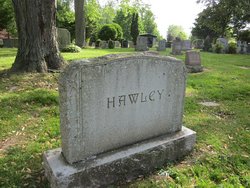TODAY’S BIRTHDAYS
September 27, 1803 Polly Armstrong Hawley
September 27, 1817 Mary Ann Hawley
September 27, 1845 Eugene J Hawley
September 27, 1883 Bertha Sarah Thayer
September 27, 1897 James Edwin Hawley (see below)
DR JAMES EDWIN HAWLEY
Joseph/Samuel/Ephraim/Jehiel/Jeptha/Sheldon/Johnson/Thomas/Tillotson/James Edwin HAWLEY

Cataraqui Cemetery, Kingston, Ontario
James Edwin (Ed) Hawley (September 27, 1897 – April 20, 1965) was an award winning Canadian geologist and distinguished Professor of Mineralogy at Queen’s University.
Hawley was raised in Kingston, Ontario, Canada. He earned both a Bachelor’s and a Master’s degree from Queen’s University in 1918 and 1920, respectively. After completing his Masters, Hawley spent three years working in petroleum geology in Alberta, Ecuador, Burma and India. In 1926, he earned his PhD at the University of Wisconsin–Madison. He stayed there for three years as an Assistant Professor.
In 1929, Hawley returned to Queen’s as Professor and Head of the Department of Mineralogy. His earliest papers in 1929 and 1930, based on research on the generation of oil in rocks by shearing pressures, are classics in the field of petroleum geology. In 1948, he established the school’s Spectrographic lab. He held that position until the Mineralogy and Geology Department were combined in 1950. At that time he was made Head of the newly created, Geological Sciences Department. He held that position until 1962. Students familiar with Mohs’ Hardness Scale referred to him as “Number 11” because the mineral, Hawleyite, was named after him.
He was a pioneer in the field of interpretative mineralogy; much of his research was devoted to genetic associations of ore deposits and to investigation of conditions under which metallic minerals may be transported and deposited. Through both by field investigations and by laboratory researches, Hawley made notable contributions to the mineralogy of such deposits as the nickel-copper ores of Sudbury, the iron ores of the Michipicoten district and Steep Rock Lake, the gold ores of Kirkland Lake and northern Quebec, the complex ores of the Eastern Townships, Precambrian stratigraphy, and Evidences of life in the Archaean.
Source: Wikipedia and with thanks to Deborah Spence


